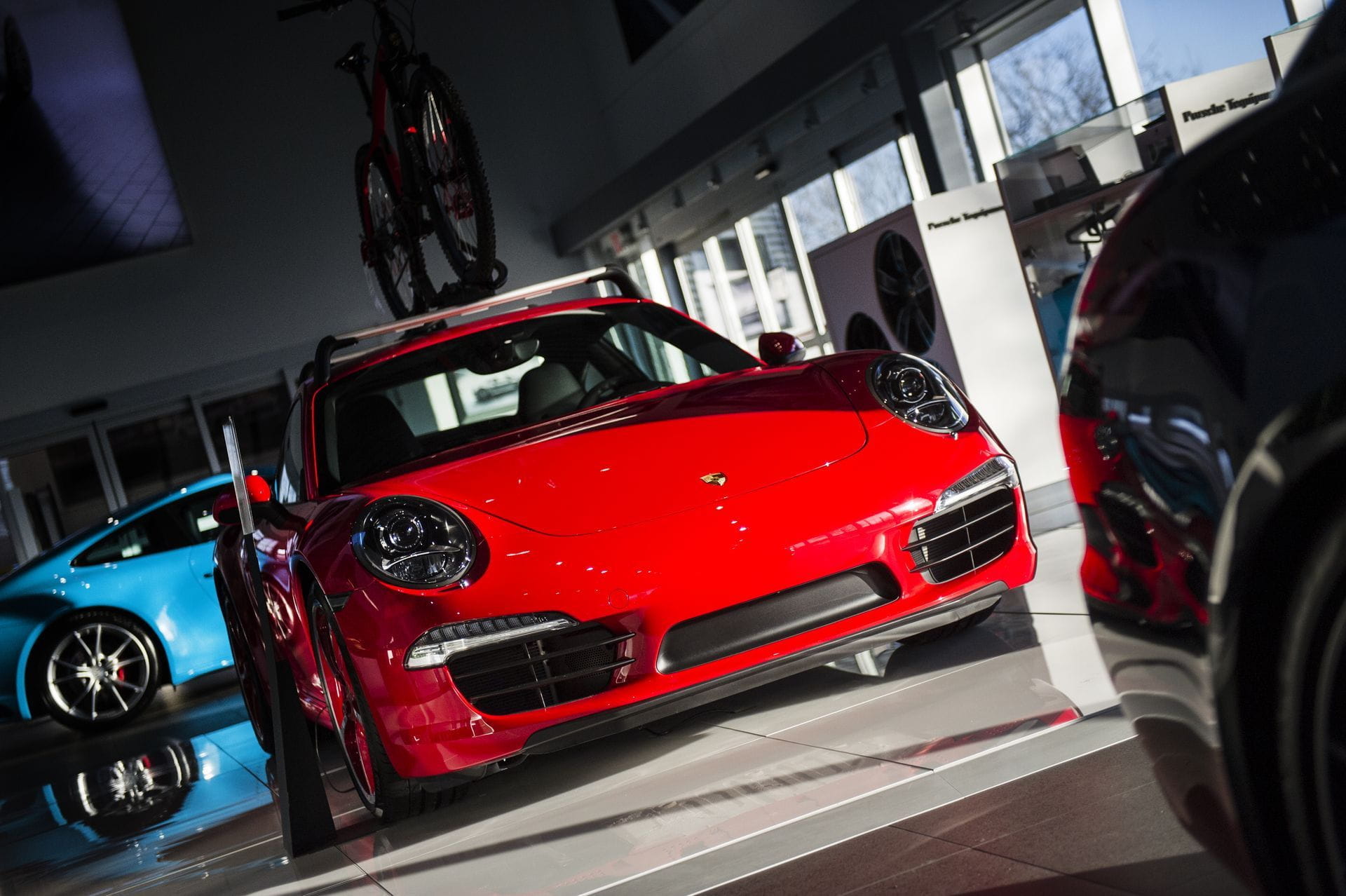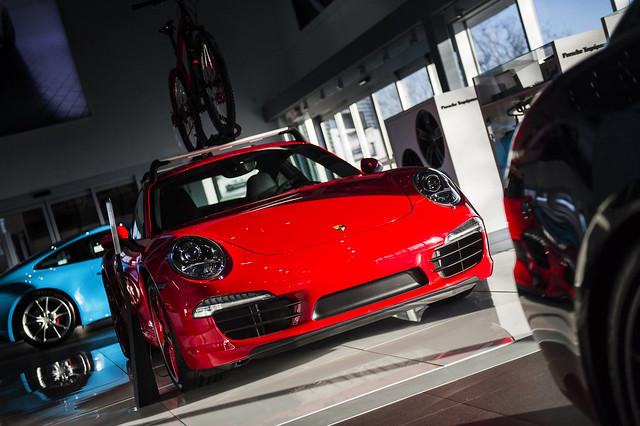
18 tips for capturing quality photos
Lucas Scarfone has a pretty sweet gig. He’s successfully married his two passions, cars and photography, in a career that sees him jetting around the globe taking pictures of unique automobiles and the men and women who own them.
“Good automotive photography makes people think,” he says. “It brings them into your world and shows them how you see the car.”
Lucas’ artistic eye is on display on his website, ScarfonePhoto.com, in the pages of the magazine Autostrada Forum, of which he is the founding editor, as well as on his Instagram account, @scarfonephoto. As a friend of Porsche Centre Oakville, Lucas was kind enough to take us through his process and show us how to shoot our Porsche in just the right way.
Here’s what’s in his secret sauce:
Don’t fret the gear:
It’s amazing what your iPhone can do once you have the basic principles. The equipment isn’t really the important part, it’s more the time of day and the angle.
Shoot during the golden hour:
The rule of thumb is the golden hour, the hour before sunset or the hour after sunrise. That’s when you’ll see the pictures will have a golden, warm tone. You’ll have less harsh shadows than at 12 in the afternoon with the sun blazing above you.

People spend hours and years in the design studio and in the wind tunnel—it’s trying to capture that as a picture, the essence of the car, the spirit of the car. You want to position the car and reposition the car to maybe catch a different angle where you highlight an intake or a body line or something like that.
Or on cloudy days:
One of my favourite times to shoot is on grey days. It’s like earth gives you a big light box, consistent, smooth. You don’t have those drastic highlights and dark shadows from a blazing sun.

Pick the spot:
Sometimes you can play with the juxtaposition of the actual car. For example, you could put a brand new 911 turbo in an abandoned warehouse or something like that. Or you can put it in the park for a beauty shot with all the trees. Or at the track; that’s always a fun place to shoot the car.

Shoot them on the move:
I shoot a lot of cars stationary, but the most fun I ever have is shooting at the track or shooting in motion because it really shows the attitude of the car. And it’s what these things are for. They spend all this time designing them, so they want you to see how they look going down the road.
There’s the panning shot:
There’s a couple different ways to shoot this. There’s the panning shot, which is what it sounds like; you stand there and focus on the car as it drives by and pan with it. If you really bump your shutter speed down you can get a cool effect where you can the background in motion and the wheels moving. It really brings the dynamism to the picture.

Or the rolling shot:
The other thing you can do is the rolling shot as they call it. So if your friend is driving your car and another friend is driving the car you want to shoot, you can get that car-to-car shot.
Once it’s parked, get the full-body shots:
I generally try to get the general shots first, where I focus on the car itself as a whole. The rule of thumb is you want to stand really far back and zoom in rather than just standing two feet from the car. It really gives a more accurate depiction of the car and the spirit of the car. So, back up 10-20 feet and zoom in.

Hit all the angles:
Usually you have the eight angles. Straight on, front three quarters, side, back three quarters, back straight on, and so on.
Play with elevation:
And you can play with elevation too. A new 991 Turbo, for example, might look better if you put your camera on the ground and shoot up, whereas an old Carrera RS might look better around eye level. Even getting up on a ladder sometimes creates an interesting perspective.
Get a few with the lights on:
The other thing is to shoot with the lights on. It can add another interesting element to the photo with the outside LED lights on or put the whole lighting system on. Sometimes you can get some really neat shots.
And keep an eye on the details:
My style is capturing unique details. If you think it’s interesting, odds are other people will as well. Car companies put years and years into designing these things and what makes these cars so special are all the little details you find on them. Whether you can capture the stitching on the steering wheel, or the perforated leather, or the speaker grilles, or the seatbelt, or the brake rotor or the headlight, or any little detail, I really love it when people look at a picture and it takes them a little while to figure out what part of the car it is. It turns the car into an art object when you really emphasize the little features. It’s really fun and it makes people think.

Shoot down on the motor:
It’s a bit more difficult with Porsche because, when you pop the hood, they’ve hidden a lot of the “guts” of the car. But I find the engine shots are always better from an elevated perspective just because you can capture a bit more of it. As opposed to crouching and shooting from waist level, if you stand on your tippy toes and get a bird’s eye shot of the engine, that’s usually the best. And the engine has a lot of cool details as well, things like carbon fiber. That’s why it’s fun shooting the older cars, because it’s all exposed and you can see it right there. The new stuff, there’s not much there when you pop it open, but you can still get some cool shots. People are always curious.
Open one door at a time when shooting the interior:
My strategy for shooting the interior is to keep one door open and one door closed. Say you’re shooting the interior from the driver’s side, keep the passenger door closed. That way you’ll get the shot of the door panel and whatnot on the other side, and it just rounds out the picture a bit more.

Use the windows:
The other thing you can do it keep both doors closed and shoot through the window with it rolled down. It is tricky to shoot the interior and lighting is key. Sometimes it’s great when the car’s got a sunroof. If you open the sunroof up all the way, you’ll get more light into the cab of the car and that’ll help. You can even shoot down through the sunroof sometimes, too.
Struggle for that perfect, dead-on steering wheel shot:
It’s tough, because usually if you’re sitting in the seat, you’re going to get your legs in the picture. If your car has a backseat, you can climb in there. Other times you’ve got to do your best to move your legs out of the frame.

Throw some people into the mix:
When I shoot for the magazine, I have to think and see how best to capture the subject’s story and their passion for their car—it’s not just the car, it’s how the car relates to the person.
Some lifestyle shots are really cool. Like a guy opening a door for his wife or girlfriend, or a guy looking out in the rear-view mirror. One of my favourite shots is shooting from outside the car with a subject in the driver’s seat looking out the front windshield, but then you shoot them through the passenger mirror. It’s pretty dynamic. You can see them looking out and it captures a bit of the car and it shows people how the car makes the driver feel.
This is what gets the best results on Instagram:
I find that the really dynamic and dramatic shots perform the best. The stuff where it’s not just a picture of a car, where they have to ask ‘wow, how’d you shoot that?’
Date Posted: May 16, 2017
